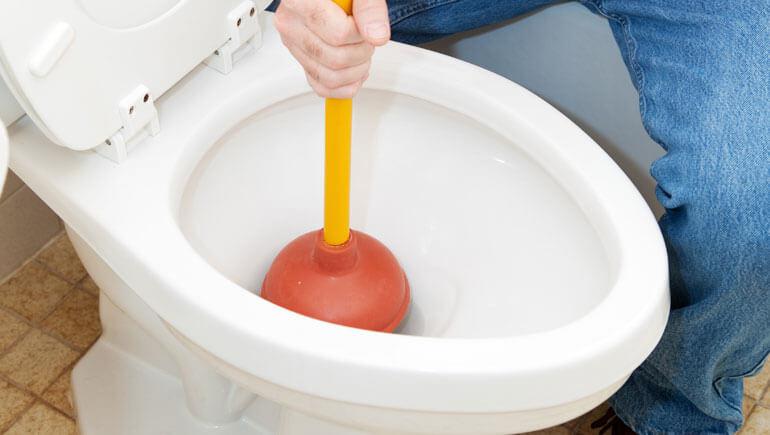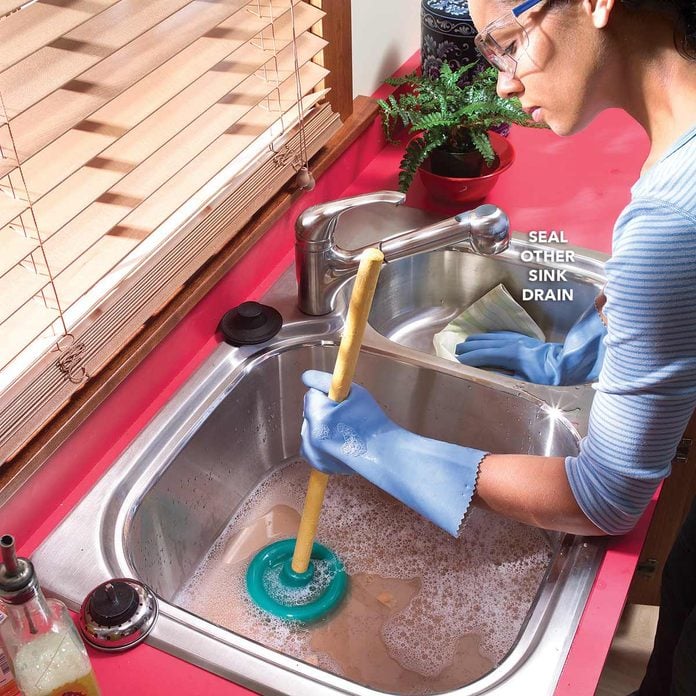Improving Plungers and Drain Cleaner: Expert Methods
Improving Plungers and Drain Cleaner: Expert Methods
Blog Article
What're your thoughts on A Guide to Plungers (and How to Use Them)?

Introduction
Correct upkeep of home drains is important for preventing obstructions and making sure smooth water flow. Among the secret tools in every house owner's toolkit is the plunger, alongside different drainpipe cleansers created to tackle stubborn clogs properly. This short article checks out exactly how to make use of bettors and drainpipe cleansers successfully to keep your drains streaming freely.
Section 1: Recognizing Plungers
Sorts of Plungers
There are numerous sorts of plungers available, each developed for various types of drains pipes and obstructs. The most common kinds consist of cup bettors, flange bettors, and accordion bettors.
How Plungers Work
Plungers work with the principle of developing stress and suction to displace clogs. When effectively applied over a drainpipe, they create a vacuum that can pull out particles or break up blockages.
Picking the Right Bettor
Picking the appropriate bettor depends on the type of drain and the nature of the obstruction. Cup bettors are suitable for sinks and bathtubs, while flange bettors are better fit for bathrooms due to their design.
Usual Errors with Bettors
Preventing these mistakes ensures reliable plunging: incorrect seal around the drainpipe, inadequate force, and unclear surrounding particles.
Area 2: Utilizing Plungers Properly
Prep work
Before diving, make certain the bettor covers the drain totally and creates a tight seal. Clear any visible particles around the drain opening.
Technique
Start with gentle diving activities to develop suction. Boost pressure progressively, utilizing a stable rhythm. Repeat as needed until the drain gets rid of.
Troubleshooting Tips
If diving doesn't function, attempt changing the seal, applying petroleum jelly for a far better seal, or using a various sort of bettor.
Area 3: Understanding Drainpipe Cleaning Company
Sorts Of Drain Cleansers
Drain pipes cleansers can be chemical or chemical. Chemical cleansers utilize strong chemicals to dissolve clogs, while chemical cleansers make use of all-natural enzymes to break down raw material.
How Drainpipe Cleaning Company Job
Chemical cleaners respond with blockages to liquify them, while chemical cleansers break down organic products like hair and oil without hurting pipelines.
Security Considerations
Constantly wear gloves and eye protection when using chemical drainpipe cleansers. Make sure ample air flow and adhere to manufacturer instructions carefully.
Eco-Friendly Alternatives
Consider utilizing vinegar and cooking soft drink or enzyme-based cleaners for environment-friendly options that are safer for pipes and the atmosphere.
Section 4: Utilizing Drain Cleaners Properly
Application Strategies
Put chemical cleansers directly right into the drainpipe opening. Enable them to benefit the recommended time before flushing with warm water. Chemical cleansers must rest overnight.
Precautions
Prevent blending different kinds of cleansers, as this can create toxic fumes. Never make use of chemical cleansers together with a bettor, as spilling can take place.
Taking Care Of Stubborn Obstructions
For persistent obstructions, take into consideration utilizing a plumbing snake or calling an expert plumber to stop damage to pipes.
Conclusion
In conclusion, comprehending how to use bettors and drain cleansers successfully is necessary for maintaining healthy and balanced pipes systems. By picking the right tools and strategies, house owners can take on minor blockages and stop significant pipes issues down the line.
How To Properly Use A Plumbing Snake To Clear Drains
When any drain clogs in our home arise, we tend to gravitate toward the plunger and little else. In cases where the plunger and its vacuum-created pressure are not able to clear clogs, many immediately move to harmful chemicals or simply call their plumber to fix the issue.
we’re happy to help with all drain cleaning needs and concerns. This includes informing you on a few other home remedies you may have at your disposal for minor to moderate clogs, one of which is the use of a plumbing snake. Many people have never used one of these before – let’s go over the steps to take when your drain clogs and you have a plumbing snake available.
Attempt Plunger Use
The first step here, as we noted above, should indeed be to grab your plunger when you notice a drain clog and attempt to resolve it this way. If you’re unsure how to use a particular type of plunger, our plumbers can answer any questions you have. If this doesn’t do the trick, however, you move on to the snake.
Locate And Prepare Snake
A plumbing snake is a metal or plastic device that’s generally about a quarter of an inch thick. It’s design with significant extensions, meant to reach down into your clogged drain and push the clog out. Snakes also contain drain augers that will latch onto and push stubborn blockages.
If your plunger doesn’t clear a clog, locate your snake and bring it to the drain in question. We also recommend keeping a bucket nearby to collect the clog once you pull it out, plus we’d advise wearing goggles and possibly protective gloves.
Feed Snake
Once you’re ready to go, feed the snake slowly down the drain, using the crank device it comes with to keep it moving until it finds the clog. Once this happens, much of the clog will be latched onto the coil so you can pull it out, while the rest will simply break up and flow downward.
Detach Debris
Remove the snake slowly from the drain, and once you’ve done so, pick off any debris that’s stuck to the coil. This is another area where wearing gloves is a must.
Flush Drain
Finally, take a few minutes to ensure the snake has done its job correctly. If you’ve been using it on a toilet, flush the toilet a couple times and make sure everything flows well. If you’ve used it on a different drain, flush it with some room temperature water.
https://www.mybuddytheplumber.com/blog/how-to-properly-use-a-plumbing-snake-to-clear-drains/

Application Strategies
Put chemical cleansers directly right into the drainpipe opening. Enable them to benefit the recommended time before flushing with warm water. Chemical cleansers must rest overnight.
Precautions
Prevent blending different kinds of cleansers, as this can create toxic fumes. Never make use of chemical cleansers together with a bettor, as spilling can take place.
Taking Care Of Stubborn Obstructions
For persistent obstructions, take into consideration utilizing a plumbing snake or calling an expert plumber to stop damage to pipes.
Conclusion
In conclusion, comprehending how to use bettors and drain cleansers successfully is necessary for maintaining healthy and balanced pipes systems. By picking the right tools and strategies, house owners can take on minor blockages and stop significant pipes issues down the line.
How To Properly Use A Plumbing Snake To Clear Drains
When any drain clogs in our home arise, we tend to gravitate toward the plunger and little else. In cases where the plunger and its vacuum-created pressure are not able to clear clogs, many immediately move to harmful chemicals or simply call their plumber to fix the issue.
we’re happy to help with all drain cleaning needs and concerns. This includes informing you on a few other home remedies you may have at your disposal for minor to moderate clogs, one of which is the use of a plumbing snake. Many people have never used one of these before – let’s go over the steps to take when your drain clogs and you have a plumbing snake available.
Attempt Plunger Use
The first step here, as we noted above, should indeed be to grab your plunger when you notice a drain clog and attempt to resolve it this way. If you’re unsure how to use a particular type of plunger, our plumbers can answer any questions you have. If this doesn’t do the trick, however, you move on to the snake.
Locate And Prepare Snake
A plumbing snake is a metal or plastic device that’s generally about a quarter of an inch thick. It’s design with significant extensions, meant to reach down into your clogged drain and push the clog out. Snakes also contain drain augers that will latch onto and push stubborn blockages.
If your plunger doesn’t clear a clog, locate your snake and bring it to the drain in question. We also recommend keeping a bucket nearby to collect the clog once you pull it out, plus we’d advise wearing goggles and possibly protective gloves.
Feed Snake
Once you’re ready to go, feed the snake slowly down the drain, using the crank device it comes with to keep it moving until it finds the clog. Once this happens, much of the clog will be latched onto the coil so you can pull it out, while the rest will simply break up and flow downward.
Detach Debris
Remove the snake slowly from the drain, and once you’ve done so, pick off any debris that’s stuck to the coil. This is another area where wearing gloves is a must.
Flush Drain
Finally, take a few minutes to ensure the snake has done its job correctly. If you’ve been using it on a toilet, flush the toilet a couple times and make sure everything flows well. If you’ve used it on a different drain, flush it with some room temperature water.
https://www.mybuddytheplumber.com/blog/how-to-properly-use-a-plumbing-snake-to-clear-drains/

As a passionate reader on How to Use a Plunger to Unclog a Toilet or Drain, I thought sharing that piece of content was a good idea. For those who enjoyed reading our blog post if you please remember to share it. Thank you for your time spent reading it.
Visit Page Report this page